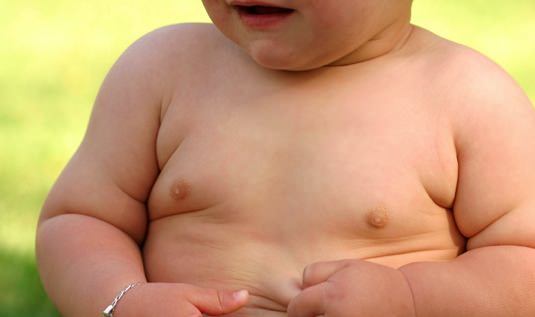A new study finds a weight problem can begin in children as young as 5 years old. Researchers at Emory University looked at childhood obesity among nearly 8,000 kids 5 to 14 years old.
They found when children entered kindergarten at 5 years old, 12 percent were obese and another 15 percent were overweight. The annual incidence of obesity dropped between kindergarten and eighth grade, but overweight five-year olds were four times as likely as normal-weight children to become obese.
Among children who became obese between 5 and 14 years old, nearly half had been overweight and 75 percent had been above the 70th percentile for body-mass index when the study began.
Dr. David Ludwig, a childhood obesity specialist at Boston Children’s Hospital, told NPR that pregnancy is even critical in a child’s life.
“Maternal diet, maternal weight gain and the infant’s diet during the first few years may have an outsized influence on long-term risk for obesity and related diseases,” Ludwig told the radio station.
Another growing body of research includes paternal health and its effects on an unborn baby.
Advocates have been ushering in new ways to help kids fit in more exercise and influence them to eat healthier. That’s key to battling childhood obesity, Cunningham said.
Her findings were published Wednesday in the New England Journal of Medicine. Read the full study here.
Take a look at the breakdown compiled by the Associated Press:
WHO BECAME OBESE: Between ages 5 and 14, nearly 12 per cent of children developed obesity – 10 per cent of girls and nearly 14 per cent of boys.
Nearly half of kids who started kindergarten overweight became obese teens. Overweight five-year-olds were four times as likely as normal-weight children to become obese (32 per cent versus eight per cent).
GRADE LEVELS: Most of the shift occurred in the younger grades. During the kindergarten year, about five per cent of kids who had not been obese at the start became that way by the end. The greatest increase in the prevalence of obesity was between first and third grades; it changed little from ages 11 to 14.
RACE: From kindergarten through eighth grade, the prevalence of obesity increased by 65 per cent among whites, 50 per cent among Hispanics, almost 120 per cent among blacks and more than 40 per cent among others – Asians, Pacific Islanders and Native Americans and mixed-race children.
By eighth grade, 17 per cent of black children had become obese, compared to 14 per cent of Hispanics and 10 per cent of whites and children of other races.
INCOME: Obesity was least common among children from the wealthiest families and most prevalent among kids in the next-to-lowest income category. The highest rate of children developing obesity during the study years was among middle-income families.
BIRTH WEIGHT: At all ages, obesity was more common among children who weighed a lot at birth – roughly nine pounds or more. About 36 per cent of kids who became obese during grade school had been large at birth.
Agencies/Canadajournal

 Canada Journal – News of the World Articles and videos to bring you the biggest Canadian news stories from across the country every day
Canada Journal – News of the World Articles and videos to bring you the biggest Canadian news stories from across the country every day

